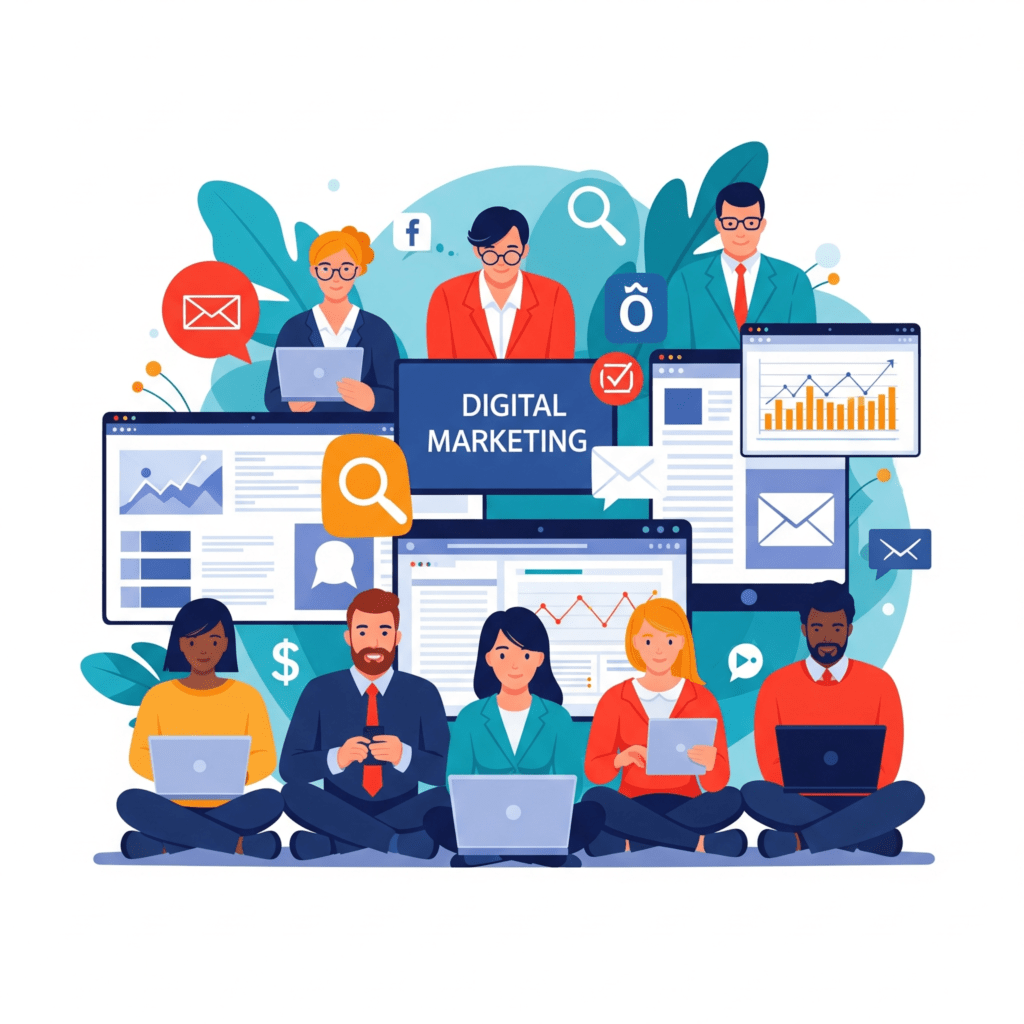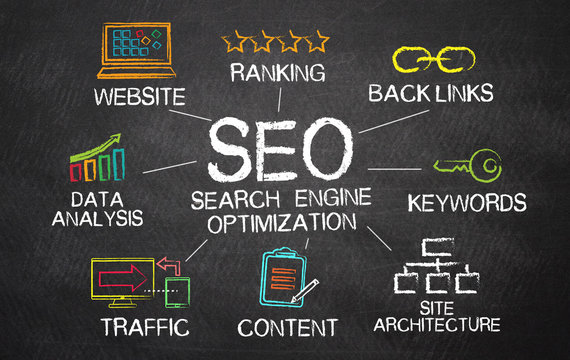How AI Tools Are Powering Smart digital marketing tools
Table of Contents

Introduction
In the hyper-competitive digital age, creating high-performing campaigns is not just about creativity and content anymore. It calls for data accuracy, smart targeting, automated workflow, and the power to evolve in real-time. New tools are changing the nature of work for digital marketers, providing sharper insights, faster execution, and greater ROI.
This blog gets into the nitty-gritty of how smart tools are fueling smarter digital campaigns—from personalized customer experiences to predictive analytics, automation, and beyond.
The Digital Marketing Landscape: Then vs. Now
Digital marketing has come a long way in the last decade. Back then, success was often defined by manual efforts, broad targeting, and a lot of guesswork. Campaigns were created based on gut instinct, and optimization meant analyzing spreadsheets over weeks or even months.
Now? Tools have redefined the rules.
- Targeting is no longer generic—it’s granular.
- Time-consuming processes like A/B testing, email segmentation, and bid management are now automatic.
- Campaign performance is visible in real-time.
- Most importantly, insights are not just historical—they’re predictive.
Understanding Intelligent Campaign Tools
At the core of smarter digital campaigns lie tools designed to:
- Automate repetitive tasks
- Analyze user behavior
- Predict performance metrics
- Personalize communication
- Optimize budgets and reach
These tools are not just dashboards—they act as decision-makers, making sense of complex data, finding patterns, and suggesting actions.
Whether social media, paid media, email, SEO, or content strategy is your game, smart tools are making each digital marketing function better.
Top Ways Tools Make Campaigns Smarter
Let’s dissect how these tools make a real difference.
1. Data-Driven Targeting
Those days of throwing out a big net are over. Now, precision targeting is the goal. Intelligent tools study:
- Demographics
- Behavior
- Purchase history
- Engagement patterns
With this data, marketers can build audience segments that are likely to convert. Instead of marketing to 100,000 people, you target the right 5,000.
Example: A fitness brand can now target vegan runners aged 25-35 who have recently interacted with plant-based protein content.
2. Real-Time Optimization
One of the biggest benefits of campaign tools is the ability to optimize on the go.
Imagine this:
- Your Facebook ad is underperforming.
- The tool stops that ad immediately.
- It shifts budget to the superior-performing variant.
- You receive a notification and a breakdown.
No wait. No manual review. No wasted spend.
This dynamic campaign management maximizes performance and minimizes waste.
3. Hyper-Personalization
Personalization today is much more than inserting a first name into an email.
With support from sophisticated tools, marketers can:
- Send dynamic email messages according to user activity
- Show customized product recommendations
- Personalize landing pages in real-time
Personalization enhances engagement. Engagement enhances conversion.
A few examples:
- Displaying winter coats for users from colder climates
- Providing discounts for return customers
- Altering CTA buttons based on past behavior
These minute changes make an enormous impact.
4. Predictive Campaign Performance
What if you could predict how your campaign is going to perform before you even pushed it live?
Smart tools assist you:
- Predict CTR (Click-Through Rates)
- Estimate conversion rates
- Determine best times to post or publish
- Forecast user churn
With this kind of insight, marketers can: - Make better decisions
- Minimize risk
- Budget effectively
This reduces surprises and maximizes ROI.
5. Streamlined Content Creation
Content creation is labor-intensive. But clever tools have streamlined it to:
- Create content outlines
- Copy variation automation
- Convert long-form content into reels or posts
- Analyze tone, readability, and performance
This is because your team works less on writing and more on strategizing and engaging.
For instance, a single blog can now be transformed into:
- 5 social media posts
- 2 email sequences
- 1 infographic
- 1 YouTube script
Smart. Efficient. Scalable.
6. Smarter Budget Allocation
Budgeting was once trial and error. Now, software looks at data and recommends:
- Where to spend
- When to scale
- When to stop
- What platform yields the best return
You no longer have to second-guess if Instagram will surpass Google Ads. Your tools will inform you.
This enables marketers to spend with strategy, not anxiety.
Campaign Success Stories
Let’s see how companies have leveraged smart tools for smarter campaigns.
1. D2C Skincare Brand Boosts Revenue by 60%
A mid-sized skincare brand implemented campaign automation and targeting tools. In three months:
- CAC (Customer Acquisition Cost) decreased by 35%
- Conversion rate increased from 1.2% to 3.8%
- Revenue per month increased by 60%
Key Tactics: Custom ads, retargeting on autopilot, A/B testing in real time.
2. SaaS Startup Doubles Trial Sign-Ups
Behavior-driven email automation helped a SaaS startup reach warm leads at the perfect moment.
- Sign-ups for trials doubled
- Email open rate reached 45%
- User retention increased by 20%
Key Tools Used: Behavioral tracking, predicted email sequences.
3. Local Retailer Expands with Paid Ads
A local fashion retailer utilized ad intelligence tools to discover top-performing content formats. Through experimentation with visuals and CTAs, they:
- Reduced ad cost by 50%
- Tripled traffic to website
- Boosted repeat buys
Outcome: From local boutique to regional player in less than one year.
Integrating Smart Tools into Your Strategy
You don’t have to be a tech wizard to leverage these tools to effectiveness.
Begin with these easy steps:
- Audit Your Current Stack
- What are you currently using?
- Are they underperforming or duplicating efforts?
- Set Your Campaign Objectives
- Awareness? Leads? Conversions?
- Select tools that support these objectives.
- Begin Small, Scale Quickly
- Start with one or two platforms.
- Track performance before scaling.
- Train Your Team
- Most tools include tutorials, support, and communities.
- Get learning in the workflow.
- Track and Adapt
- Automate, yes, but also analyze.
- Follow the data with your next step.
Selecting the Proper Tool for the Task
With so many tools available, how do you select the correct one?
Here’s a structure:
| Goal | Tool Type |
|---|---|
| Lead Generation | Landing page builders, CRM |
| Email Marketing | Email automation tools |
| Social Media Growth | Scheduler + Analytics |
| Paid Advertising | Ad optimization platforms |
| SEO Strategy | Keyword + Content analyzers |
| Content Marketing | Planners + Repurposing tools |
Always seek tools that are:
- Simple to integrate
- Scalable
- User-friendly
- Insight-rich
Future of Smart Campaigns
As digital marketing continues to evolve, look for even smarter campaigns. Here’s what’s on the horizon:
- Real-time user adaptation: Campaigns that adapt to live behavior.
- Emotion-aware content: Features that feel mood and adjust visuals.
- Voice search optimization: Campaigns that optimize for voice-first behavior.
- Cross-platform intelligence: Tracking from Instagram through email to website with ease.
The aim? More context, less clutter. More relevance, less guesswork.
Final Thoughts
Smarter digital campaigns aren’t trendy—those are the new norms. Through the proper tools, brands are able to provide:
- Tailored experiences
- Aligned strategies
- Agile budgets
- Improved ROI
At The Next Digital, we’re dedicated to arming brands with smart marketing strategies that succeed—not only today but also tomorrow.


